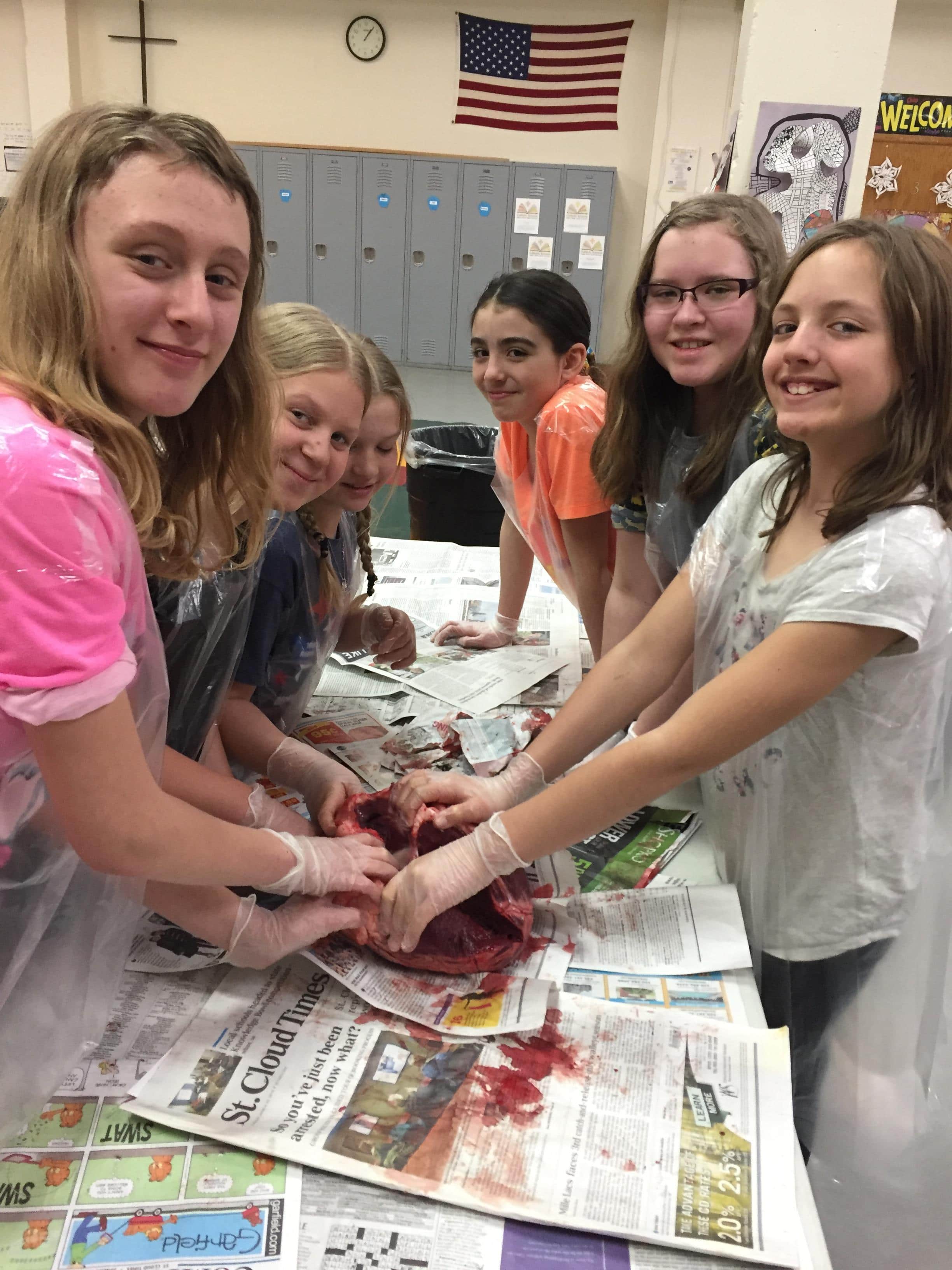by Cori Hilsgen
news@thenewsleaders.com
All Saints Academy-St. Joseph campus fifth-graders recently studied how the heart functions while dissecting cow hearts in their classroom.
Fifth-grade teacher Tess Koltes said she has been teaching the respiratory and circulatory system to students for 20 years. The dissection allows students a chance to gain hands-on science experience.
She said students have a natural curiosity about the human body and want to learn “what makes them tick.”
While studying the respiratory and circulatory systems, students learn about healthy eating such as lowering salt and fat intake and the importance of exercise to strengthen both systems.
The units also coordinate well with the Drug Abuse Resistance Education program and the importance of staying drug, alcohol and tobacco-free.
Koltes said students were amazed by the size of the hearts in cows.
“At first, some students are apprehensive to get their ‘hands dirty’,” she said. “However, once they visually experience the complexity of the inner heart and begin following the path in which blood flows with their hands, they are hooked on dissecting.”
Several fifth-graders commented about what they learned through their dissecting experience and what they would tell future students.
“I learned that the trachea is covered with cartilage,” said Austin Baird. “Because it’s covered with cartilage, it feels like it’s covered with bones.”
“The dissection was helpful because you got to see the heart in three dimensions and feel the different parts,” said Sylvie Bechtold.
“The blood of the heart can keep your blood cells in a safe place,” said Sayler Christians. “The heart will be really cool to learn about and it gets very messy.”
“What I tell a future fifth-grader (is) it might look bad but once you start it’s not so bad,” said Maria Glatzel. “I mean it can be a little gross but really most of the time it’s fine, maybe even cool.”
“What I would tell future fifth-graders (is) if you don’t think about all the blood and stuff it can be fun and not so gross,” said Paul Rademacher. “Just don’t think about so much blood. You don’t want to miss out. It is very amusing if you pay attention.”
“Dissecting made me understand the heart because you can see it in real life,” said Maleah Thielen.
“I would tell the future fifth-graders it looks really gross at first, but it is actually really fun to learn about how everything works in the heart,” said Julia Uhlenkamp.
Classroom parents who are doctors, cardiologists, nurses or operating-room technicians have often volunteered their time to assist with the classroom dissecting.
Koltes appreciates the professionals who help teach the students and give “expert” advice.
This year, she appreciated and is thankful for the assistance with the dissections she received from parents Eric and LouAnn Baird.
The school has purchased the hearts and a set of lungs from the St. Joseph Meat Market each year. This year they received cow hearts and a set of lungs. Other years it has been pig hearts, which are about the size of an adult heart.

All Saints Academy fifth-graders (left to right) Maria Glatzel, Addison Keul, Sayler Christians, Kaidance Stephens, Julia Uhlenkamp and Ava Nicoll dissect a cow’s heart while learning about the human respiratory and circulatory systems.



